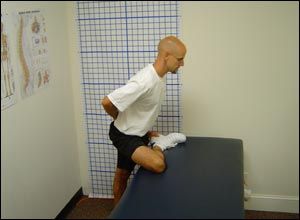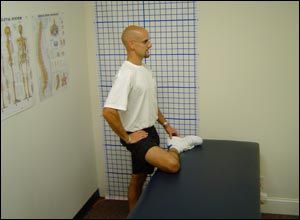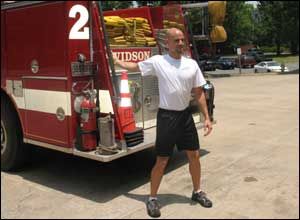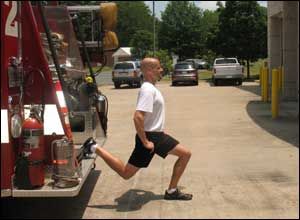The amount of hours we spend training and preparing for a call is staggering — countless repetitions of skills and techniques practiced until the point of perfection. After years of running calls and honing skills, something interesting occurs; as we become accustomed to our work routines, our bodies begin to regress, almost to the point of neglect.
We can sit for hours waiting for a call, then ramp up to 100 percent with no warm up period. Professional athletes spend hours training for an event and are allowed to stretch, warm up, massage and fuel their body to prepare and perform at their full capacity. Should the “sport” of public safety be any different?
We can use our down time to our advantage. Instead of sitting around all shift in front of the TV or computer, we can spend small amounts of time stretching and exercising to allow our bodies to perform at an optimal levels. There is no reason for us and our peers to become injured on the job. Employing some simple strategies by using what you have at your disposal will do wonders to help you feel better, move better, and prevent injury.
Think about it: how many hours do you spend sitting during a shift? Are you sitting with perfect posture? How many times during your shift do you stretch or exercise?
Let’s take something seemingly difficult or cumbersome, like stretching, and see how easy it is to do using your apparatus. All those grab bars, handles and steps are ideal for stretching and are simple and quick to do. If you perform the following stretches 1-2 times per shift while adding in some safe and effective exercise, you will be on your way to feeling and performing better.
The stretches I have included are but a few of the many that you should do each and every day, both on and off duty. The more consistent you become with a daily fitness routines, the more effective the activities become. Try implementing a routine stretch right after you check off the truck. You are there anyway and it only takes a few minutes.
Another very simple trick to help your maintain flexibility is hydration. Both hot, cold and dry weather/climates will dehydrate you. You should obviously already be aware of the effect it has on your body from a medical standpoint, but staying hydrated will also help to keep your muscles loose and pliable.
Exercise is just as fundamental to injury prevention as stretching. Try to incorporate “functional” movements that involve multiple joints at one time. You do not fight fires or tend to patients while lying on your back, so there is no need to do bench presses to be effective on the squad. Exercises like squats, lunges, standing rows, and using dumbbells instead of barbells will all help you stay strong, fit and flexible. Being fit and staying healthy is easy if you employ some simple tricks that can be integrated into your shift. That’s the bottom line to remember.
| Hamstrings | Hold: 30 - 45 seconds Sets: 2 per side Times Per Day: 2 | |||
Preparation Movement Tips | ||||
| Gluteals / Piriformis (countertop stretch) | Hold: 30 - 45 seconds Sets: 2 per side Times Per Day: 2 | |||
| Preparation Movement Tips
| ||||
| Chest (doorway stretch) | Hold: 30 - 45 seconds Sets: 2 per side Times Per Day: 2 | |||
Preparation Movement Tips | ||||
| Standing Hip Flexor/ Quad Stretch | Hold: 30 - 45 seconds Sets: 2 per side Times Per Day: 2 | |||
Preparation Movement Tips | ||||

















